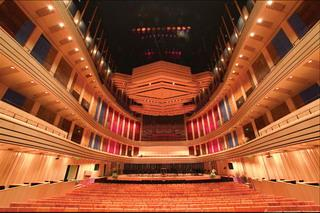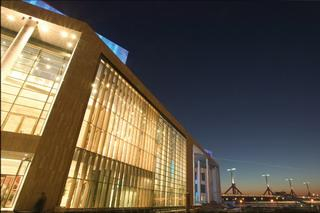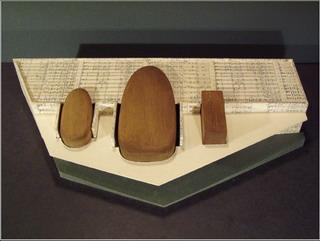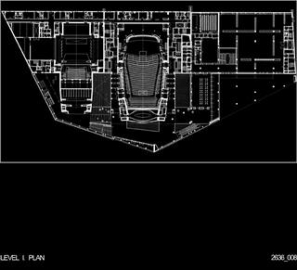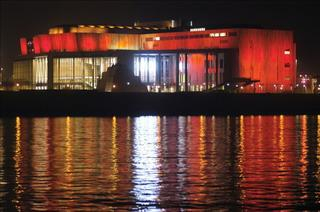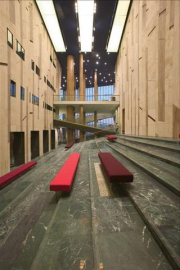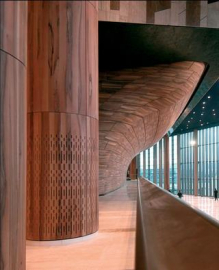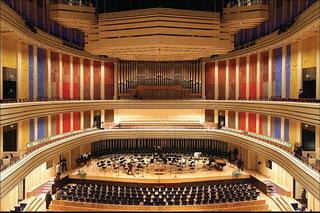Palace of the Arts
The Palace of the Arts, completed in 2005 is located in Budapest Hungary. Situated within the Millenium City Centre, the site can be considered an extension of the traditional centre of Budapest with exceptional views of the Danube and the Buda Hills.
The building, the result of a private competition represents the first building completed within the construct of a PPP ( Private Public Partnership). The Ministry of Culture, as the end user and owner of the building collaborated with private developer Tri-Granit Rt to define and develop what, in the end has become the most significant cultural development in Hungary in the past 100 years. The building has enabled Budapest, a city with a thriving cultural past, to offer a venue within which the 21st century requirements have been provided in many areas.
In essence, the Palace of the Arts consists of three cultural venues: the 1800 seat Bartók National Concert Hall, the 450-seat Festival Theatre and the Ludwig Museum. The primary aim of the building has been to provide an environment wherein the various cultural events can not only occur separately, but in a cohesive interactive manner. The public areas, which connect the three venues have been designed as a large public foyer, within which the public can freely flow from one area to the other. In the 18.5 metre high foyer area, naturally-lit courtyards serves as separations between the building areas. The use of natural materials- Hungarian limestone, European walnut and Italian marble intentionally serve as a contrast to the monumental glass façade which encloses the overall building.
The Ludwig museum is part of an international collection with museums in Vienna, Köln and St. Petersburg. The museum provides a flexible row of spaces essentially housed in a white box environment. The mix of natural and artificial light, as well as views from floor to floor enrich the visitors experience within the 3 level museum.
The Festival Theatre was conceived as a traditional theatre, with a fly tower as well as side and lower stage facilities. The theatre seats 452 people and was designed for folk and dance productions as well as classical chamber concerts.
The Bartok National Concert hall was designed as a traditional shoe box concert hall. Enabling the music loving audience of Hungary to have a professional and world class venue, the concert hall was designed with the expertise of the American acoustician Russell Johnsen of Artec. The concert hall was conceived along the principles of adjustable acoustics allowing a variety of musical events to flourish in a quality acoustic environment. The 80+ reverberation doors and connecting reverberation chambers as well as the adjustable canopy enable the concert hall to enjoy infinite acoustic qualities. As in several other portions of the building, the collaboration between artist and architect was tested in the hall- namely the reverberation doors were designed and clad in the plaster works of sculptor György Jovánovics.
In summary, the building has created a novel cultural forum, wherein the arts can be enjoyed simultaneously in many venues.

